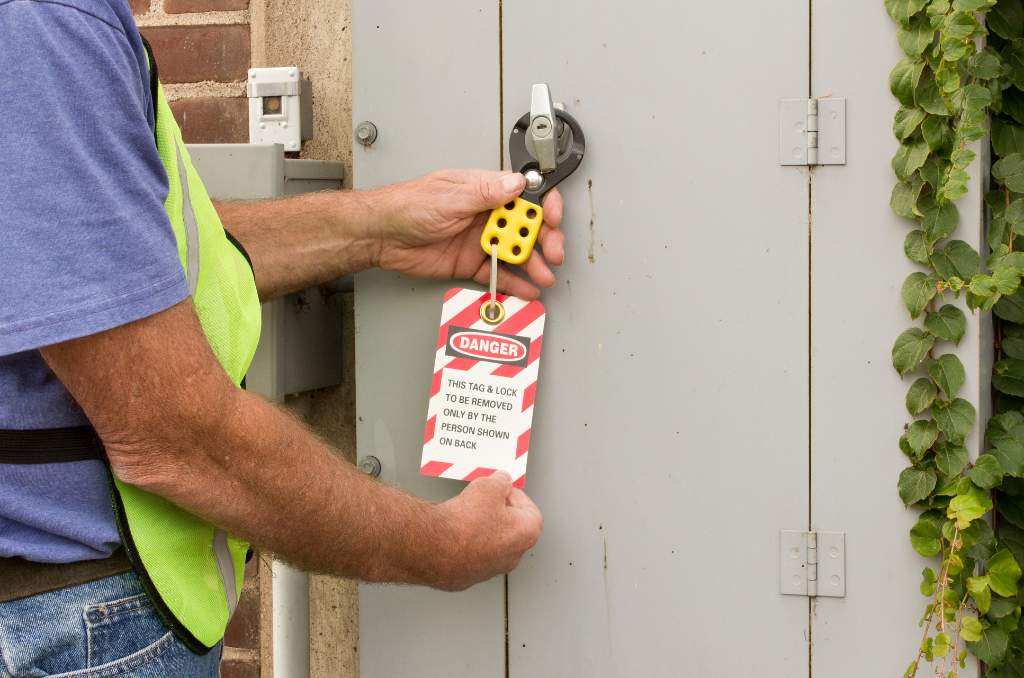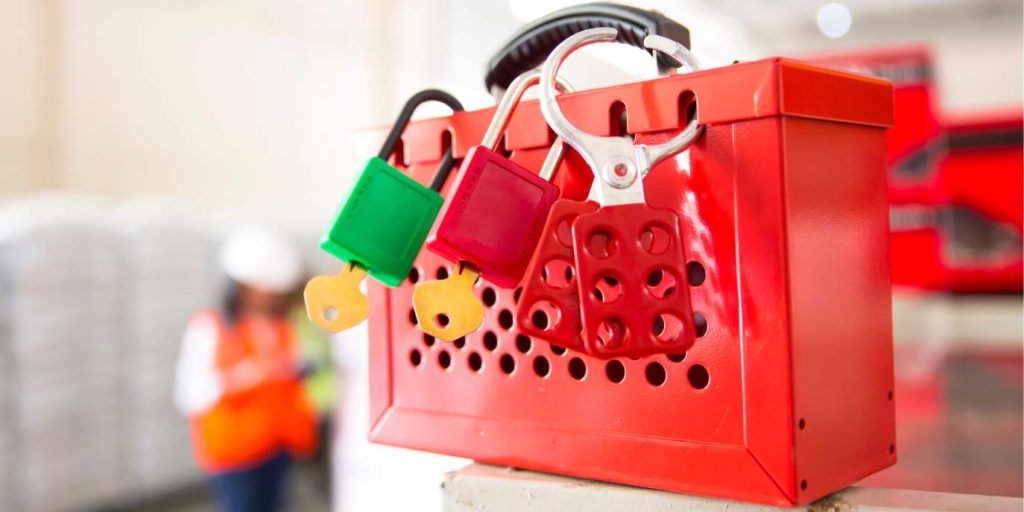Working with or around machinery or industrial equipment can be especially dangerous. This is why The Occupational Safety and Health Administration (OSHA) created lockout/tagout (LOTO) procedures.
LOTO procedures were developed to help ensure workers are safe from hazardous energy when the machinery is being maintained or worked on.
Lockout/Tagout- What is it, exactly?
Lockout/tagout procedures are a very important key part of keeping employees and property safe when working with or around machinery.
It refers to a set of procedures where manual locks and tags are added to machines when they are undergoing maintenance. The locks and tags are put on the machines to alert employees that the machines cannot be turned on or used.
9 Steps for LOTO

There are quite a few steps to take in order to achieve properly executed LOTO procedures, but it’s also important that they are done in the right order to maintain safety.
Here are 9 steps that are critical for any LOTO procedure:
1. Identify the proper procedure to use
When initiating a lockout/tagout on machinery or equipment, identifying the proper procedure should be the first step.
Oftentimes, a company will keep their LOTO procedures on digital software or in a hardcopy binder. The proper procedures and step-by-step instructions for shutting down and restarting machinery or equipment should be found there.
2. Notify employees
The next important step in properly executing LOTO is to notify all employees and anyone who may have contact with the equipment prior to the start of the maintenance.
Information such as when the maintenance is set to begin, how long it’s projected to take, and the name of who is overseeing the shutdown (in case there are any questions) should be provided.
3. Shut down affected equipment
Different machines and pieces of equipment will have different shutdown procedures. Since the shutdown process usually requires following several specific steps, it’s important to do it exactly as listed in the procedure.
Anyone shutting down equipment should make sure that moving parts are stationary, as well as verifying the controls are all in the “off” position.
4. Isolate the equipment
Once the equipment is shut down, it’s important to isolate it from any energy sources.
This can be done by ensuring all energy sources are turned off on the machine, as well as at the breaker boxes. The details for this step in the process will also vary depending on what type of equipment it is, but the procedure should outline all energy sources that need to be addressed, including:
- Electrical
- Hydraulic
- Gravitational
- Chemical
- Thermal
- Mechanical
- Pneumatic
5. Add locks and tags
The next step in the process is to add individual lockout locks and lockout tags. The locks are to ensure the power transfers are in a safe position and can not be moved. Locks and tags should be added to:
- Machine controls
- Pressure lines
- Starter switches
- Suspended parts
The tags should include specific details, like the time and date that it was tagged, as well as the reason for the TOLO procedure. The tags should also include information for the person(s) that tagged the machinery, such as their contact information and the department they work for.
These locks and tags can be assigned to different employees, and it’s important to apply and remove the locks and tags that are yours only ever.
6. Release stored energy
Even though everything has been shut down, that doesn’t mean there isn’t still some stored energy in the equipment. This energy needs to be restrained or released.This stored energy can be gravitational, mechanical, chemical, electrical, thermal, pneumatic or hydraulic. Some examples of these are:
- Capacitors
- Springs
- Rotating flywheels
- Elevated components
- Water pressure
- Steam
- Air
7. Test controls to ensure shut off
After all the energy sources are disconnected and locked/tagged, you should clear the area and attempt to start the equipment. It should not energize, move, or do anything that indicates there is active power from the energy sources.
8. Reset controls to the off position
Once you have turned off all power sources, released all stored energy, and confirmed that the equipment is locked out, you should reset all controls to the off position. This way, the machine won’t immediately start when an energy source is reconnected.
9. Return machinery to operating order
Once a successful lockout has been established, you can safely perform the machine or equipment maintenance and return it back to working order. Remember, when restoring power, lockout tags should only be removed by their owner.
Following proper lockout/tagout procedures is crucial for keeping employees and buildings safe from hazardous energy sources. For all of your lockout/tagout needs, SafetySign.com has you covered! Shop our full collection of lockout/tagout locks, tags, and more.

